30. Oct 2017 - DOI 10.25626/0077
Srđan Milošević is a research fellow at the Institute for Recent History in Belgrade (Serbia) and director of the Center for Historical Studies and Dialogue. He got his PhD at Belgrade University. His main fields of research are historical anthropology, history of historiography and the interconnections between history and law, with a particular focus on transitional justice in Serbia and the former Yugoslavia. He is author of History Before the Court. Interpretation of the Past and Legal Aspects in the Prince Paul’s Rehabilitation (2013, in Serbian).
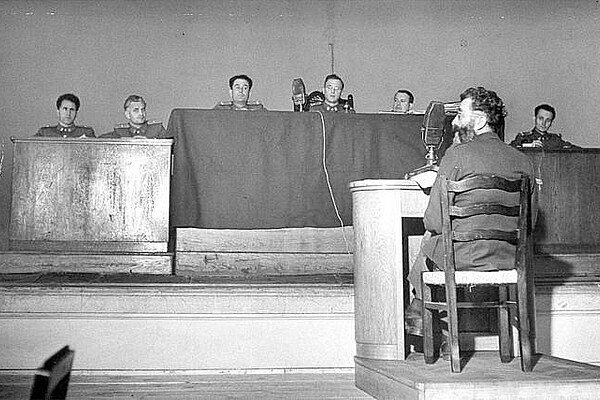
In May 2015, the Supreme Court in Belgrade announced that General Dragoljub “Draža” Mihailović, a controversial wartime minister and commander of the anti-communist Chetniks (četnici), was officially rehabilitated. This rehabilitation took place almost seven decades after the original verdict was made by a post-war communist military tribunal which resulted in Mihailović’s execution in 1946. Mihailović was a highly controversial figure during his time, but became even more so after his death when he became an epitome of anti-communist campaigns by émigré Serbian circles and among Western ‘Cold War warriors’. His judicial rehabilitation in present day Serbia not only marks the end point of an extended and highly politicized legal procedure, it also highlights once again the complicated processes of Serbia’s current political struggles over memory, the roots of which often go back to the war itself, as well as to the post-war and Cold War-era battles over its legacies.
Indeed, the decision by the Supreme Court to rehabilitate Mihailović came after years of legal wrangling and public dispute and it is still one of the most controversial judicial acts in Serbia today. The ruling was based on a 2006 Rehabilitation Law (Zakon o rehabilitaciji), a measure of delayed transitional justice in post-Milošević Serbia.[1] The presiding judge argued in favour of rehabilitating Mihailović on grounds of procedural errors in the original post-war trial, not because they found him to be innocent of the considerable crimes for which he had been convicted. Mihailović was a prominent anti-communist commander of armed forces both during and shortly after the Second World War. Initially, he fought alongside communist partisans against the Axis powers, and later collaborated with the occupation forces against the communists in an attempt to gain control of post-war Yugoslavia. In both cases his armed units committed numerous atrocities against civilians.
The military tribunal of 1946, which was set up by the communist-dominated post-war government of Yugoslavia, had established Mihailović’s guilt for charges of high treason and war crimes on the basis of evidence that included documents from his own personal records as well as numerous witness testimonies, as well as photos and documents of German and Italian provenance. This evidence exposed his collaboration with the Axis powers and proved his responsibility for war crimes committed against captured communist-led partisans, their families, and other civilians. To be sure, by current legal standards the 1946 Belgrade trial – similar to many other post-Second World War trials across Europe – suffered from many legal shortcomings, as I will demonstrate later on. This was clear to observers at the time, since the trial transcripts were published already in 1946.[2] The final verdict, however, was still well-founded and the crimes Mihailović was accused of in 1946 were precisely those he had committed during the war in Yugoslavia – this has since been meticulously reconstructed and proven by a whole body of serious historical scholarship, both in Serbia and abroad.[3] And yet, almost seventy years later, the Supreme Court determined that procedural misconduct during the post-war trial is considered more important than the defendant’s actual guilt and that it justifies his posthumous rehabilitation. It took nine years for the court to reach this decision, despite a solid body of existing evidence and even though many other posthumous and no less controversial rehabilitations were issued in the meantime. In actuality, the protracted judicial process and its results hint at motives behind the rehabilitation of Mihailović.
In order to better understand the court decision of 2015 and the broader debate on the current rehabilitation of highly controversial wartime figures in Serbia, one must look back into wartime history. In addition, one must examine the post-Second World War narrative constructions propagated especially among officials from former Allied countries and circles of the Serbian émigrés. This will allow us to better grasp the role Mihailović plays in the imagination of Serbs; a role that was once reflected not only in nationalist rhetoric and war propaganda during the war of the 1990s, but is also present in the debates of today. Indeed, while the question of legal justification in this case is certainly pertinent, it is more important in this article to reconstruct and explain how Serbian society arrived at a point where the rehabilitation of a notorious war criminal like Mihailović became a matter of defending “the cause of justice.”
To government officials in the allied countries, General Mihailović was – between the end of 1942 and the summer 1943 – well on his way to becoming a controversial wartime figure. Due to his efforts to construct a nationalist, royalist, anti-Axis resistance that emerged in the summer the summer/autumn of 1941, he was welcomed as a resistance fighter against the Axis powers. However, this status was questioned when Mihailović’s units began to disengage from the struggle against the occupiers and instead redirect actions against communist-led partisans, thereby coordinating, at times, actions with the occupiers (something that Mihailović described during the trial as “war intrigues”). His actual role as a commander of loosely coordinated armed units became increasingly opaque as the war dragged on. Western allies, especially the British government, felt increasingly wary about him as evidence about četnici /occupier collaborations became known. Thus, Mihailović was eventually abandoned by the British, who transferred their support to Tito’s partisans in the battle over Yugoslavia.
Given these circumstances, it is all the more surprising to see how the story of Mihailović’s collaboration with the Axis powers faded away almost immediately after the Second World War. With the advancement of Cold War hostilities, the collaborator narrative was replaced by another leitmotiv: Mihailović’s strong anti-communist beliefs. For many Serbs (as well as their British and American friends) who blamed the Allies for having failed to sufficiently acknowledge and appreciate his role in the anti-communist fight this new formulation now became the key to interpreting his wartime activities. In fact, after Mihailović was sentenced to death in 1946, his image became that of a martyr, especially in post-war American and British public opinion. The image of Mihailović as a victim of the brutal Tito communist regime was reunited with that of the much-romanticized war general in his earlier career. In 1948, US president Harry S. Truman even decorated him posthumously with the Legion of Merit for the rescue of hundreds of American air force pilots by his četnici. Yet, the US government at the time was very well aware that Mihailović played both sides during the war; in 1947 the US diplomats from Belgrade had reported on “Mihailovitch’s [sic] eventual collaboration with the Germans and Italians” during the war.[4]
After the war, Tito’s regime established close relations with the Soviet Union, thereby confirming the belief among anti-communist circles in the West that supporting Tito’s Partisans while abandoning Mihailović had been a fatal mistake. The characterization of Mihailović as an innocent victim of Tito’s intrigues and of the wider communist network spread successfully, also among the Yugoslav section of the British secret service (SOE).[5]
Among circles of Serbian émigré in the West, Mihailović became the embodiment of both the heroic anti-Axis and anti-communist struggle. The dominant narrative shared by these circles was that of the alleged betrayal of the former general by the British. Central to this narrative was a cynical utterance made in 1942 by Winston Churchill during a conversation with his envoy in war-torn Yugoslavia, Sir Fitzroy Maclean. According to Maclean’s own recollections, the conversation was about the decision to support Tito’s partisans:
I thought it right to remind him [Prime Minister Churchill – S. M.] that the Partisans were communist-led.
‘Do you intend to make your home in Yugoslavia after the war?’ he asked.
‘No,’ I replied.
‘Neither do I,’ he said.
After the war, British views on their own government’s actions toward Yugoslavia diverged considerably, as can be seen from protocols of parliamentary debates in early 1946. There are still controversies about the motivations and actions of Mihailović today. Although historiography has firmly established the collaboration of the četnici with the Axis powers, there are still many people (including historians) who simply reject this fact as a communist forgery and infamous fabrication. The main argument being that the occupiers treated Mihailović as an enemy (which is true), and that his četnici saved hundreds of Allied pilots that had crashed in an area that was under their control (which is also true). However, the unanswered question remaining within this interpretative frame is why these facts disprove the claim that Mihailović and his units, playing both sides, collaborated with the Axis powers against the communist-led partisans. What is much more important, however, is the ample amount of evidence demonstrating that the četnici committed crimes against civilians – non-Serbs and alleged communist sympathizers – none of which was ever denied by Mihailović, who ordered some of these criminal actions himself.[6]
Apart from the rather simplified argumentation shown above, controversial questions still remain to be discussed both among historians and in the public sphere. Was Mihailović personally involved in the collaboration? Was he directly ordering his commanders to collaborate with the occupiers, or was he just turning a blind eye to what they did? Were the communists a more dangerous threat for the Serbs than the occupiers, who would have been expelled from the country, once peace was restored? Was he given the right to a fair trial in 1946? Was the decision by the British government to abandon Mihailović an act of dishonesty reflecting the character of British politics, especially towards the Serbs? These are some of the questions that reoccur in academic writing and public debates over Mihailović even today. In Yugoslavia, during the socialist period, it was impossible to challenge the official historical narrative about Mihailović and his četnici with a counter position naming them as traitors and criminals. However, with the communist regime collapsing and the rise of Slobodan Milošević’s nationalism in the 1990s, the Mihailović-friendly narratives fostered among émigré circles during the Cold War took hold again in the country.
The breakdown of the Yugoslav state and political system was a complex process, precluded by a radical change of historical narratives. Some historical interpretations that were previously marginalized and delegitimized during the socialist period – particularly those concerning the events during the Second World War – suddenly reappeared or were dug up from the depths of the 'national consciousness'. This foreshadowed the actual digging out and excavating of the bones of the ‘national martyrs’ and ‘innocent victims of the communist regime’ in later years. Among the new/old narratives was that of the Yugoslav communists having undermined Serbian national interests for decades. Indeed, this understanding of Tito’s regime has become the leading idea of Serbian nationalism, expressed openly ever since the late 1980s. As opposed to Tito and the communist-led partisans, it was now Mihailović’s četnici that actually represented and defended Serbian "national interests".
Interestingly, this was the ideological credo held mostly by the opposition to the post-communist regime of Slobodan Milošević, a regime which continued to embrace a pro-partisan narrative, however perverted and unrecognizably distorted. One of the perversions was a thorough ‘ethnic cleansing’ of the memory of the Yugoslav liberation struggle, at the end of which only ethnic Serbian communist partisans appeared to be the true fighters against the occupiers and their collaborators. Thus Tito himself, who was of mixed Slovene/Croat origin, was ‘demystified’ and in fact described as an anti-Serbian “hochstapler” (imposter). The streets and squares named after him were renamed, and anti-Titoist propaganda was unleashed – matching in its determination the standards previously set by the pro-Mihailović ideological criticism of Tito’s regime. In other words, while subscribing to different narratives of Second World War history, both the Milošević regime and its opposition shared anti-Titoist and nationalist emotions and attitudes. Ironically, and perhaps surprisingly, the regime that emerged from the incomplete transition still wanted to legitimize itself as leftist, socialist (i.e. progressive) and, in fact, anti-nationalist. According to official propaganda, the real nationalists were the others: both the opposition leaders or the Albanians from Kosovo within Serbia and the Croats, Bosniaks and Macedonians in the other Yugoslav successor states.
With regard to Mihailović and his četnici, the official interpretation of Second World War history took another turn in the 1990s: while emphasizing the collaboration with the Axis powers, the crimes against non-Serbs that were committed by the četnici as part of this collaboration now somehow vanished from the official representations of war history and never returned into the debate. In addition, the coat of arms of the Yugoslav army – marked with a red star since 1945 – was replaced by nothing less than the emblem of Mihailović’s četnici. This emblem now decorated the uniforms and helmets of those who bombed Dubrovnik, besieged Sarajevo and killed Bosniak civilians in Srebrenica; it reflected the state of mind and the radical turn from the communist “brotherhood and unity” ideology to the nationalist narratives of inter-ethnic hate. Consequentially, the Serbian military organizations that operated during the wars of Yugoslav succession boasted about being četnici (not partisans); they were also perceived and labelled that way by their enemies.
The overturn of the Milošević regime in 2000 resulted in an ideologically diversified public sphere, politically dominated by a fairly centrist majority. Although it was still marked by an anti-communist, and particularly anti-Titoist undercurrent, the new government did not engage much in the politics of Second World War memory as it tried to come to terms with the devastating decade under the Slobodan Milošević regime. However, the need for changing the historical narratives and public memory culture was recognized by the new government of Zoran Đinđić and his successors resulting in the introduction of a new history curriculum and new history textbooks to Serbian schools as early as 2002. The interpretation of the Second World War in these textbooks was reversed, with Mihailović and his četnici being praised as the only true ‘national’ and anti-Axis forces during the Second World War. The communist partisans, and particularly their leadership, were here depicted as unscrupulous individuals eager to gain power at any cost, including through the sacrifice of Serbian lives in particular.[7]
Along with this ‘official’ shift in the interpretation of the Second World War emerged another ideological paradigm, namely, the idea of a “historical national reconciliation” between četnici and partisans. This reconciliation, however, was to be achieved on a pro-četnik and ethno-nationalist ideological platform. According to this new reading, both četnici and communist partisans had been predominantly Serbs, their movements were anti-fascist, and they struggled for the interests of the Serbian people. Only their top-leadership – consisting mostly of ethnic Croats and Slovenes – compromised and misused the patriotism of these good Serbian partisans. An official manifestation of this slightly bizarre reconciliatory narrative appeared in 2004 in the form of a parliamentary act that granted the formal status of ‘fighters against fascism in the people’s liberation struggle’[8] – an honour that had previously been bestowed only to communist partisans– to all former members of the četnici that were still alive in those days.[9]
The next step towards further institutionalizing the new interpretation of history was the previously mentioned Rehabilitation Law, that was passed in the Serbian parliament in 2006. Obviously, ideological preparation began long before the law was adopted, and it was publicly justified as being motivated by an urge to engage in transitional justice, but what followed from it was the judicial rehabilitation of numerous notorious war criminals, including General Mihailović. This was usually achieved on the basis of arguing that the post-war trials were politically and ideologically motivated. In fact, this line of legal argumentation seems to be basis for most of the retrospective, and often posthumous, rehabilitations in Serbia over the last years and is usually explained by the Law’s declaration that the right to rehabilitation shall be given to all those who had been victims of communist-era prosecution “based on political and ideological grounds”.[10] Serbian courts seem all too eager to fulfil this rather vaguely formulated criterion which often results in conclusions that declare as politically and ideologically motivated any procedural misconduct that can be identified in any trial from the socialist period.[11] As the legislators did not in any way specify what exactly would constitute “ideological and political reasons”, or determine how to recognize them, the courts had quite far-reaching discretion in this respect. The outcome was that everybody who had ever criticized the Yugoslav communist regime on political/ideological grounds – not to mention those who took up arms against the communists during the war – could potentially be rehabilitated, because their prosecution could only be interpreted as politically and ideologically motivated, regardless of any specifics concerning the accused. In summary, conditions were created in which the decisions about rehabilitation depended largely on the ideological preferences and historical worldview of the judge.[12] Furthermore, according to the Law, the rehabilitation procedure was non-contentious, meaning that only the side that demanded the rehabilitation was to be heard in court, with no dissenting voice permitted.
During Mihailović’s rehabilitation hearing, the court’s main task consisted of evaluating the relevance of the materials presented by a team that included historians and legal experts. The rehabilitation team took pains to find new facts that would support their case, but they were ultimately unsuccessful in this endeavour, failing to introduce anything not already known since the end of the war. The detailed transcripts of the original trial in 1946 provided all the indications needed to fulfil the vague criteria prescribed by the Rehabilitation Law. In fact, rehabilitations had been previously approved in cases with far less obvious evidence for political and ideological motivations.
Still, it took the court nine long years to come up with this conclusion. During this process, in 2009, a special state commission was created by the ministry of justice to investigate of the circumstances of the Mihailović trial and execution. It consisted of the same historians, lawyers and right-wing political activists who had pushed for the rehabilitation in the first place. Their main task was to conduct research in national and foreign archives and examine other sources of documentation. The commission was also entrusted with finding the location of Mihailović’s execution and burial, which remains unknown to this day. The general consensus of the public and the media is that the commission did not play any significant role, or achieve any considerable results. It is noteworthy that this commission was established as a state-sponsored investigative body. This, combined with the obviously political rather than professional qualifications of some of its members, hints at the political motives behind this rehabilitation. Thus, historians and legal scholars outside the commission tend to ridicule its work, pointing at obvious historical mistakes and misperceptions. One such example was the statement of one of the commission members, a high-ranking official from the Ministry of Justice, who declared the Mihailović trial of 1946 to have been influenced by the Comintern, thereby failing to realize that it had been dissolved in 1943.[13] An equally egregious example was a fairly expensive journey of the commission members to the National Archive in London to “find out” that Mihailović was executed on 17 July 1946 – a fact that had been officially and publicly announced by the Yugoslav authorities in 1946.[14] The commission had obviously decided not to believe information that came from “communist sources”. Thus the report of the British ambassador to Belgrade, based almost certainly on the official Yugoslav execution date, was considered a more accurate confirmation of death than the announcement itself.
One aspect of the rehabilitation endeavour that goes far beyond the judicial procedures concerns the ongoing search for Mihailović’s grave; something the communist authorities had kept secret. But with a changed ideological paradigm that no longer considers the former general to be a war criminal, the search for his grave has acquired new legitimacy. Moreover, not knowing the location of the grave has become a central element to “winning the historical game”. For those who support a heroic narrative, not knowing where Mihailović died gives a frustrating advantage to the communists and their ideological followers. Indeed, Mihailović’s burial site would in all likelihood become a lieu de memoire and place of pilgrimage for his admirers.
The first glimpse of such a development occurred in 2010 when for a moment it seemed certain that the commission had found Mihailović’s remains. Rather than reliable information, rumours led the commission to a location where it carried out an excavation unearthing bones that were in very bad condition and looked as if they had been burned. Some pieces of metal were found together with the bones – it was suggested they were bonds – and some fragments of glass. The preliminary interpretation was that whoever was buried there – and the commission was cautious enough not to claim with certainty that it was Mihailović – had been burned by some sort of Molotov cocktail.[15] The notion that the official execution of a convicted war criminal was enacted through the primitive act of burning the body with a Molotov cocktail seemed highly improbable. Mihailović’s ‘worshipers’ however, believed this was a resolution and overnight the site was marked by a cross, in the manner of a proper grave, and admirers of the former general began their pilgrimage, bringing flowers and lighting candles.[16] In the end, the forensic analysis of the excavated bones revealed not only that the bones were not the remains of Mihailović, but they were not even human.[17]
In court Mihailović’s followers were more successful. The protracted court proceedings amounted to a decision that clearly ignored any argument put forward against the rehabilitation of this notorious war criminal. To be sure, dissenting voices could be heard, even if they came from rather small circles of non- or anti-nationalist individuals, organizations and media. Their main argument was that Mihailović was so obviously and undeniably responsible for war crimes and collaboration that his rehabilitation would constitute a more atrocious violation of justice than if the procedural misconducts of the original trial of 1946 were accepted. There was no doubt that the procedural errors had been manifold: the trial was rushed, the defence lawyers were given insufficient time to prepare and had only limited access to their client; the communist leadership predetermined certain procedural issues, such as when and how the trial should be made public; and secret politburo discussions and the publicly expressed opinions by the communist leadership about Mihailović’s guilt were read out during the trial. As previously mentioned, all of these facts were already known, however, several legal experts have since made convincing arguments that none of these procedural errors were sufficiently grave enough to justify the rehabilitation of the convicted. The lawyer and anti-fascist activist Aleksandar Sekulović wrote a book in which he convincingly elaborated on this argument and analysed the many shortcomings of the rehabilitation procedure in the Mihailović case.[18] This confirmed an argument made by law professor Vesna Rakić Vodinelić that this kind of political influence and procedural failing should not happen in a consolidated democracy and that the present-day context can by no means be compared to the post-Second World War situation.[19]
The recent rehabilitations in Serbia are widely perceived as official exonerations of former war criminals, even though technically the courts who issue the rehabilitation ruling have only reassessed the legal aspects of the original procedures and not the criminal liability of the defendants. This perception can be found both among the supporters and opponents of the rehabilitations. One side insists that through these rehabilitations “historical justice” is being established. The other side objects to this claim, pointing out that rehabilitations are part of a dangerous historical revisionism and an ideologically motivated (nationalist) imposition of a singular, biased interpretation of the past. Interestingly, some of the supporters of the rehabilitations would even agree with the notion of being labelled revisionist. As one member of the rehabilitation team once said in response to a journalist’s question as to whether or not the Mihailović case is a revision of history: “this is the revision of the revision”. For him, the Yugoslav communists revised history first, a process that – thanks to the rehabilitations – was being reversed in order to get closer to the ‘original’ truth that was in every way the opposite of what the communists had claimed. But how is it possible to ‘revise the revision’ if the rehabilitations, as argued, do not address the actual historical questions or the actual events but merely argue on legalistic, procedural grounds?
Transitional justice, especially in the area of criminal justice, is often perceived as a first step towards establishing the rule of law in nascent democracies. The Rehabilitation Law’s emphasis on procedural error as the grounds for rehabilitation seems to hint at the law-makers’ intentions to measure communist-era court proceedings along present-day standards of the rule of law. Indeed, those who support the rehabilitation of wartime and communist-era convicts often argue along these lines. There is, however, an obvious discrepancy between these real or alleged intentions and the actual perception of the rehabilitation cases in the Serbian public, as well as between the legalistic arguments of the courts and the highly emotional, moral and/or (pseudo-) historical arguments of those arguing for, or against, rehabilitating war criminals or heroes, depending on the point of view. In Serbian public opinion, rehabilitations are not at all perceived as a measure establishing the rule of law, but rather as a retroactive affirmation of the ideological stances and beliefs of those rehabilitated – stamped with the authority of the law.
Thus, behind the entire transitional justice/rehabilitation debate in Serbia is a fundamental schism between those who see the rehabilitations as the very core of historical justice and those who oppose them, characterizing them as the embodiment of a new and unscrupulous historical revisionism. This gap, however, did not appear out of nowhere: today’s rehabilitations were preceded by two decades of nationalist propaganda in which the communists were blamed for having prosecuted the righteous “national heroes” (Mihailović being one in the Pantheon) whose “only crime” was their commitment to the alleged “national cause” of the Serbs. In this sense these court cases are far more than judicial procedures – they constitute an important component of a new revisionist and heavily ethno-nationalist politics of history and memory in Serbia today.
Srđan Milošević: Twice Before the Court: The Judicial Rehabilitation of General Dragoljub Mihailović. In: Cultures of History Forum (30.10.2017), DOI: 10.25626/0077.
Copyright (c) 2017 by Imre Kertész Kolleg, all rights reserved. This work may be copied and redistributed for non-commercial, educational purposes, if permission is granted by the copyright holders. For permission please contact the editors.
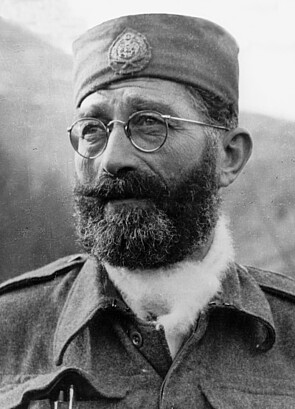
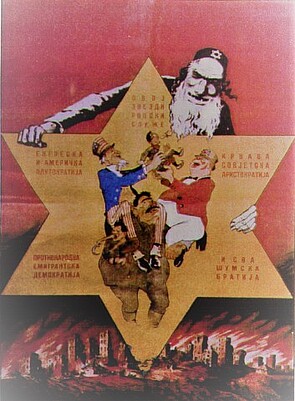
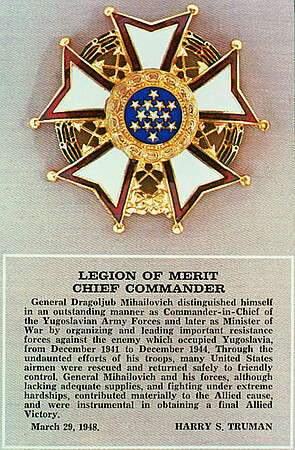
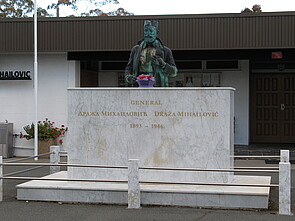
Nevena Daković · 21.04.2022
Representing Trauma - Writing the Past Into the Present Through Films
Read more
Katarina Ristić · 31.07.2020
The Nobel Prize Award Sparks a Memory War: The Recent Handke Debate
Read more
Isabela Kisic · 12.09.2017
‘Lex CEU’, Anti-Soros Campaigns and the State of Civil Society in Serbia
Read more
Rena Jeremić Rädle · 25.10.2015
Remembrance in Transition: The Sajmište Concentration Camp in the Official Politics of Memory of Yug...
Read more
Ivana Dobrivojević · 23.10.2013
From the Beginning to the End 1918 – 1991. Exhibition in the Museum of Yugoslav History
Read more
Get this article as PDF download (including pictures).